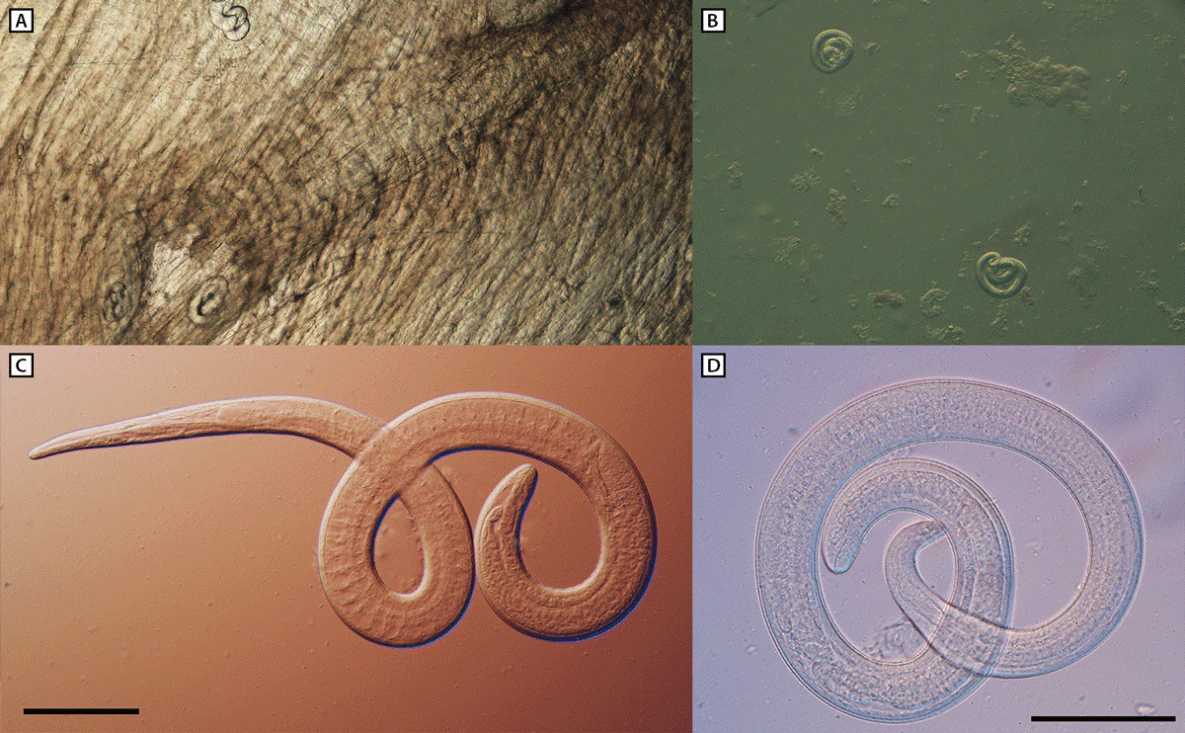
Enlarge / American black bear seen along the Red Rock Parkway inside Waterton Lakes National Park in Alberta, Canada. (credit: Getty | Artur Widak)
In the summer of 2022, a family gathered in South Dakota for a reunion that included a special meal—kabobs made with the meat of a black bear that one of the family members had “harvested” from northern Saskatchewan, Canada, that May. Lacking a meat thermometer, the family assessed the doneness of the dark-colored meat by eye. At first, they accidentally served it rare, which a few family members noticed before a decision was made to recook it. The rest of the reunion was unremarkable, and the family members departed to their homes in Arizona, Minnesota, and South Dakota.
But just days later, family members began falling ill. One, a 29-year-old male in Minnesota, sought care for a mysterious illness marked by fever, severe muscle pains, swelling around his eyes (periorbital edema), high levels of infection-fighting white blood cells (eosinophilia, a common response to parasites), and other laboratory anomalies. The man sought care four times and was hospitalized twice in a 17-day span in July. It wasn’t until his second hospitalization that doctors learned about the bear meat—and then it all made sense.
The doctors suspected the man had a condition called trichinellosis and infection of Trichinella nematodes (roundworms). These dangerous parasites can be found worldwide, embedded into the muscle fibers of various carnivores and omnivores, according to the Centers for Disease Control and Prevention. But, it’s quite rare to find them in humans in North America. Between 2016 and 2022, there were seven outbreaks of trichinellosis in the US, involving just 35 cases. The majority were linked to eating bear meat, but moose and wild boar meat are also common sources.
Read 3 remaining paragraphs | Comments


